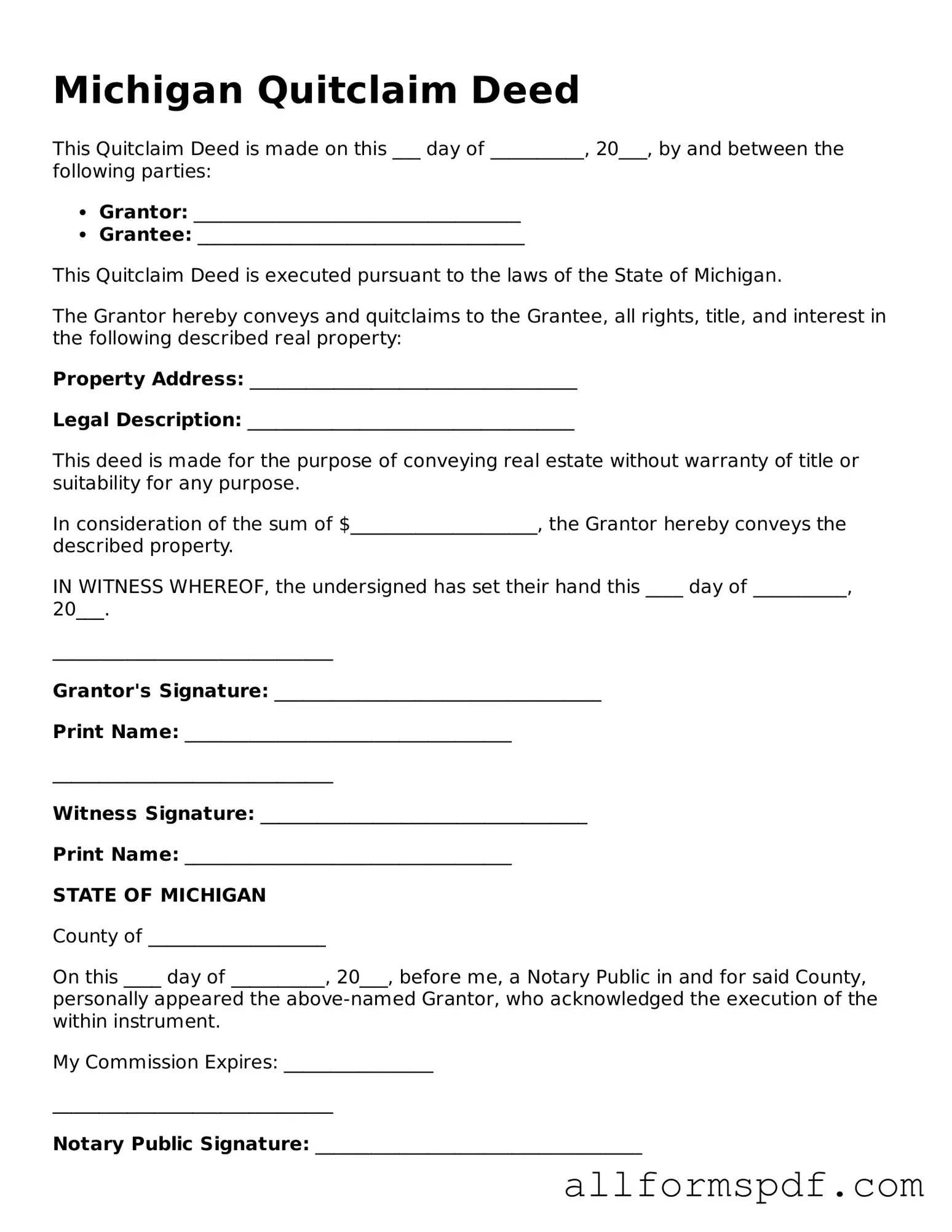Michigan Quitclaim Deed - Usage Guidelines
After obtaining the Michigan Quitclaim Deed form, you will need to complete it accurately to ensure the transfer of property rights is legally recognized. Follow these steps to fill out the form correctly.
- Identify the Grantor: Write the full name of the person or entity transferring the property. Include their address for clarity.
- Identify the Grantee: Enter the full name of the person or entity receiving the property. Again, include their address.
- Describe the Property: Provide a detailed description of the property being transferred. This should include the property's address and legal description, which can often be found on the property deed or tax records.
- Consideration: Indicate the amount of money or value exchanged for the property. If it’s a gift, you can note "for love and affection" or similar wording.
- Sign the Document: The grantor must sign the deed in the presence of a notary public. Ensure the signature is clear and matches the name provided earlier.
- Notarization: Have the notary public complete their section, verifying the grantor's identity and signature.
- Record the Deed: Take the completed and notarized form to the county clerk’s office where the property is located. Pay any required recording fees to officially file the deed.
Once you have completed these steps, the deed will be officially recorded. This process ensures that the property transfer is recognized by the state and protects the rights of both the grantor and grantee.
